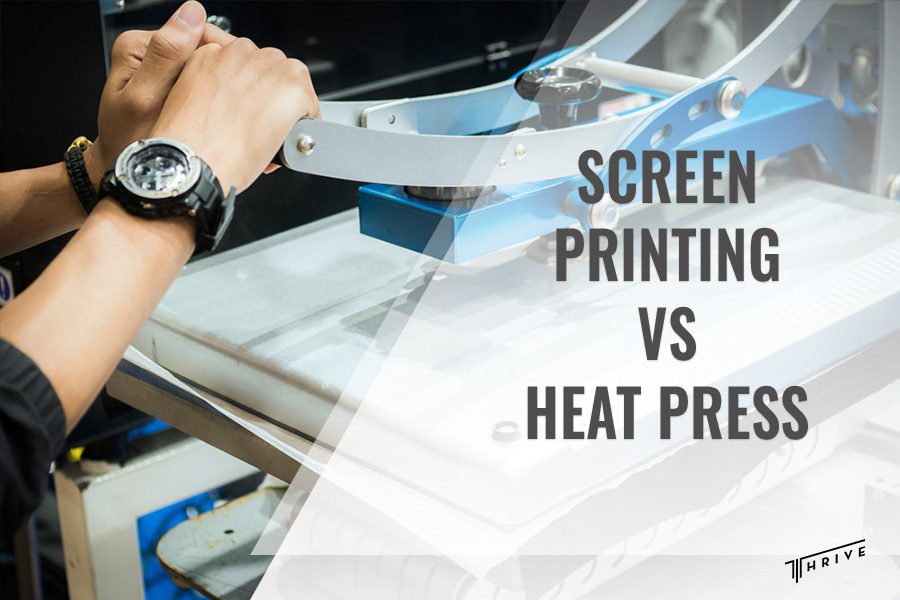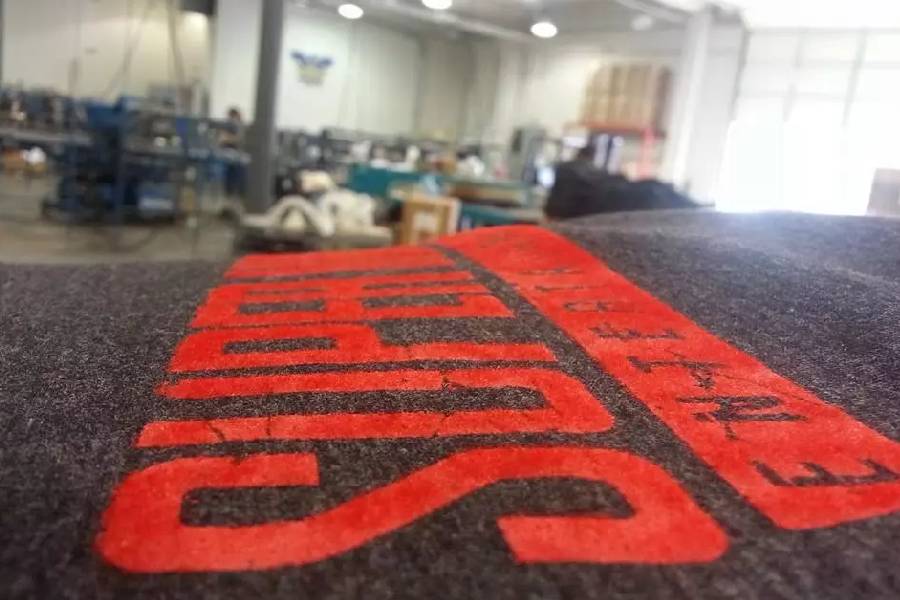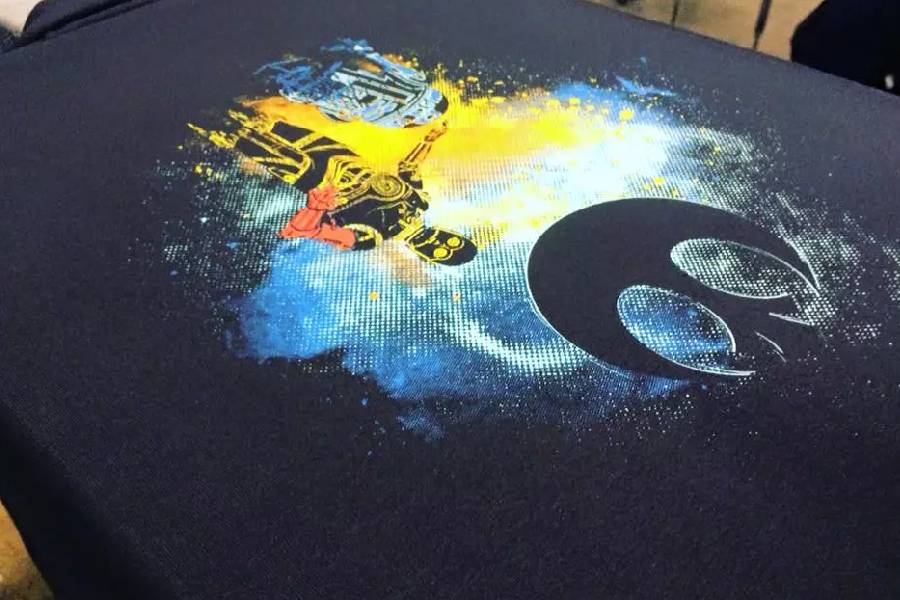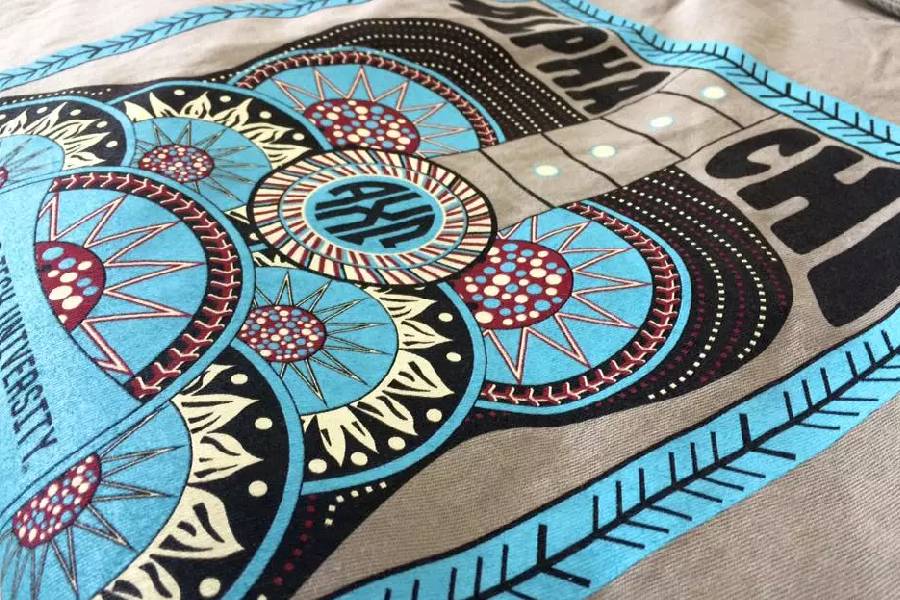
In the printing industry, there are various techniques, of which the most popular are screen printing and heat press. Their popularity is due to the high-quality print both methods produce. However, there are some significant differences between screen printing vs heat press.
As one of the top commercial printing companies, we are experienced in both practices. This is why we will tell you all about the advantages and drawbacks of screen printing and heat press.
Keep reading to learn which printing method is the right one for you.
Screen Printing vs Heat Press
When it comes to the printing process, two printing methods stand out and are widely used in the printing industry. There is screen printing and heat press, and both have their pros and cons.
Screen printing and heat press provide striking and incredible finished products. But, there are differences in their production, durability, and materials used.
The main difference is that the heat press works through a combination of heat and pressure. In contrast, with screen printing, we layer the ink and transfer it onto the garments by pressing it through a screen.
Depending on the needs of our clients here at Thrive Screen Printing, we print to provide them with the best contract printing services. We ensure to print your clothing designs with the highest quality.

What is screen printing and how does it work?
The origins of screen printing trace back to the 960s China during the Song dynasty. As one of the oldest printing methods, it is still one of the most prevalent due to the quality of the prints.
Still, despite being around since the 10th century, screen printing wasn’t popular until the 1960s with Andy Warhol’s famous artwork. After, screen printing quickly became widespread, especially with the invention of the rotating multi-color screen printing machine.
The technological invention significantly sped up the printing process. The screen printing process involves using mesh screens to apply ink on garments evenly. Screen printing is an applicable technique for printing on clothing, paper, plastic, etc.
A screen goes on top of the garment, and using a squeegee blade, the ink is pulled across it. This pushes the ink through the mesh holes onto the garment. But, to add more colors, you must use a new mesh screen for each.
So, with screen printing, the inks soak into the garments, giving the designs incredible longevity.
What is a heat press and how does it work?
While the heat press doesn’t have the same long history as screen printing, the method is equally popular. The heat press printing technique became popular in the last twenty years due to offering easy printing with high-quality designs.
The heat press machine applies heat and pressure to imprint designs onto garments. Because this method uses heat for printing, it is also known as thermal printing.
The heat press process incorporates a preprinted graphic sheet consisting of an ink layer, a polyester carrier film, and an adhesive layer. The adhesive is made of wax material that melts with heat application. Once the image is imprinted on the garment, it cools, and the printing process is done.
There are two heat press practices: vinyl and digital print. Vinyl printing involves using a machine to cut out designs from color vinyl. After laying it out onto a garment, the design is pressed with heat to transfer.
In contrast, digital heat printing prints a design from a computer using a printer, paper, and solvent ink. The ink sticks to it and transfers the image by pressing the paper onto the printing material.
Is it Better to Screen Print or Heat Press?
Both screen printing and heat press have advantages and drawbacks. So, when choosing which one is better for you, consider the amount of prints you need and the quality of the design.
Screen printing advantages
Durability
Unlike heat press, screen printing creates prints that last longer and are not prone to fading, even with machine washing. You also will not need to worry about the design cracking over time. We use only high-quality inks to ensure the durability of our products.
Versatility
Screen printing is an incredibly versatile printing method, limited only by the size of the screen used. With screen printing, designs can be transferred to different materials. For example, plastic, glass, metal, wood, and most commonly, clothing garments.

Suitable for large orders
Screen printing is perfect for large orders, as you can use one stencil to print numerous prints. The beginning of the process may seem time-consuming, with developing the different screens needed for different inks. But once they are ready, the printing moves along pretty fast.
Heat press advantages
Multi-color designs
While screen printing has a limit with the colors, that’s not the case with heat press. With heat press printing, it is easy to print complex multi-color images. But there is a chance that the printed image may fade or crack easier than screen-printed ones.
Lower environmental impact
Heat press printing is more environmentally friendly as it produces minimal waste. In contrast, screen printing uses a lot of water after printing, and the inks used may harm the environment.
Heat press printing does not require any water or dye mixing. Washing any equipment parts is unnecessary without any pigments in the printing process.
Suitable for smaller orders
The heat press is ideal for printing smaller batch orders like promotional merchandise. With heat press printing, you can print intricate images with fast turnaround times.
But, heat printing is unsuitable for large orders as the process will be incredibly time-consuming. This is because the process requires printing and positioning transfer sheets of the designs for each garment.
Frequently Asked Questions
Is heat press more expensive than screen printing?
No, a heat press is generally less expensive than screen printing. The entire heat print setup is relatively inexpensive and only involves a printer, heat press machine, vinyl or computer, and garments. In contrast, we use different mesh screens and various-colored inks for screen printing, which raises the production cost.
Can you achieve different effects or finishes with screen printing versus heat press?
While both heat press and screen printing produce high-quality prints, they also offer different effects and finishes. For example, screen printing allows us to emboss, add glitter, or glow-in-the-dark finish to the prints. However, heat transfer printing produces more detailed and full-colored prints.

Conclusion
The right choice for screen printing vs heat press depends on individual needs. Consider the quantity of your order, the durability of the prints, and the quality before deciding which is right. If you are unsure, you may always contact us, and we will help you decide.

Robert Fisher is the founder and CEO of Thrive Screen Printing and brings extensive experience in the screen printing and fulfillment industry.

